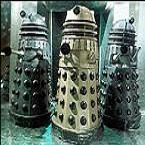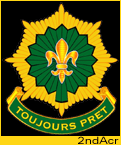frank1970
Posts: 1678
Joined: 9/1/2000
From: Bayern
Status: offline

|
Leopard: http://www.army-technology.com/projects/leopard/
LEOPARD 2 MAIN BATTLE TANK, GERMANY
The Leopard 2 is a main battle tank developed by Krauss-Maffei AG, now Krauss-Maffei Wegmann (KMW), of Munchen, Germany. The Leopard 2 is a successor to the successful Leopard 1.
PROGRAMME
The Leopard 1 was first produced in 1963 by Krauss-Maffei for the German Ministry of Defence and more than 6,000 vehicles have been exported to Belgium, Denmark, Germany, Greece, Italy, Canada, the Netherlands, Norway, Turkey and Australia. The successor to the Leopard 1, the Leopard 2, was first produced in 1979 and is in service with the armies of Austria, Denmark, Germany, the Netherlands, Norway, Switzerland, Sweden and Spain, with over 3,200 produced. The Finnish Army is buying 124 and the Polish Army 128 used Leopard 2A4 tanks from Germany.
The Leopard 2A6 includes a longer L55 gun, an auxiliary engine, improved mine protection and an air-conditioning system. The German Army is upgrading 225 2A5 tanks to 2A6 configuration, the first of which was delivered in March 2001. The Royal Netherlands Army has ordered the upgrade of 180 of its 2A5 tanks to 2A6 configuration, the first of which entered service in February 2003. In March 2003, the Hellenic Army of Greece ordered 170 Leopard 2 HEL (a version of the 2A6EX) for delivery between 2006 and 2009.
Spain has ordered 219 Leopard 2E (a version of the 2A6 with greater armour protection) and four Leopard 2ER recovery vehicles. The first 30 are being built by KMW and the rest will be license-built in Spain by General Dynamics, Santa Barbara Sistemas (GDSBS). Deliveries of the first batch are due in 2004 and should complete in 2008.
Another variant is the Leopard 2(S), which has a new command and control system and new passive armour system. 120 Leopard 2(S) have been delivered to the Swedish Army. Deliveries concluded in March 2002.
MINE PROTECTION
KMW has developed a mine protection system for the Leopard 2, following a concept definition by an international working group from Germany, Switzerland, Netherlands, Sweden and Norway, under the lead of the German procurement agency BWB. An order placed in September 2003 involves the modification of 15 Leopard 2A6 tanks for the German Army and ten Leopard 2A5 (Strv 122) for Sweden. The first mine-protected tank was delivered in July 2004.
The kit consists of add-on armour elements including a new plate under the tank floor, new vision systems and restowage arrangements for ammunition. Trials in February 2004 demonstrated that, with the new armour package, Leopard 2 tank crews could survive the detonation of an anti-tank mine under the tank without suffering any injuries.
CONSTRUCTION
The hull is in three sections: 1) the driving compartment at the front, 2) the fighting section in the centre, and 3) the engine at the rear of the vehicle.
The driver's compartment is equipped with three observation periscopes. Space to the left of the driver is provided for ammunition stowage. A camera with a 65° horizontal and vertical field of view positioned at the rear of the vehicle and a television monitor provide a reversing aid for the driver.
The turret is located in the centre of the vehicle. There is an improvement programme which provides third generation composite armour, and the additional reinforcement to the turret frontal and lateral armour with externally mounted add-on armour modules. In the event of weapon penetration through the armour, the spall liner reduces the number of fragments and narrows the fragment cone. The spall liner also provides noise and thermal insulation. The reinforcement provides protection against multiple strike, kinetic energy rounds and shaped charges.
FIRE CONTROL
The commander's station has an independent periscope, a PERI-R 17 A2 from Rheinmetall Defence Electronics (formerly STN Atlas Elektronik) and Zeiss Optronik GmbH. The PERI-R 17 A2 is a stabilised panoramic periscope sight for day/night observation and target identification, and it provides an all round view with a traverse of 360°. The thermal image from the commander's periscope is displayed on a monitor. The PERI-R17 A2 can also be used for weapon firing as it is slaved into the tank's fire control system. The image from the gunner's thermal sight can also be transmitted to the commander's PERI-R17 periscope so the commander can switch the gunner's video image to the commander's monitor. This enables the commander and the gunner to have access to the same field of view of the combat range.
The gunner's station is equipped with an Rheinmetall Defence Electronics EMES 15 dual magnification stabilised primary sight. The primary sight has an integrated laser rangefinder and a Zeiss Optronik thermal sight, model WBG-X, which are both linked to the tank's fire control computer. The thermal sight uses standard US Army common modules, with 120 element cadmium mercury telluride, CdHgTe (also known as CMT) infra-red detector array operating in the 8 to 14 micron waveband. The infra-red detector unit is cooled with a Stirling closed-cycle engine.
The sight is fitted with a CE628 laser rangefinder from Zeiss Optronik. The laser is a Neodinium Yttrium Aluminium Garnet, (Nd:YAG) solid state laser. The rangefinder can provide up to three range values in four seconds. The range data is transmitted to the fire control computer and is used to calculate the firing algorithms. Also, because the laser rangefinder is integrated into the gunner's primary sight, the gunner can read the digital range measurement directly. The maximum range of the laser rangefinder is less than 10,000m with accuracy to within 20m.
The command and fire control procedure known as first echo selection is used for laser rangefinding for anti-helicopter operations. The principal weapon uses electronic firing to reduce reaction times.
MAIN ARMAMENT
A new smoothbore gun, the 120 millimetre L55 Gun, has been developed by Rheinmetall GmbH of Ratingen, Germany to replace the shorter 120mm L44 smoothbore tankgun on the Leopard 2. The extension of the barrel length from calibre length 44 to calibre length 55 results in a greater portion of the available energy in the barrel being converted into projectile velocity increasing the range and armour penetration. The L55 smoothbore gun, equipped with a thermal sleeve, a fume extractor and a muzzle reference system, is compatible with current 120mm ammunition and new high penetration ammunition. An improved kinetic energy ammunition known as LKE 2 DM53 was developed as a result of a Tactical Requirement issued in November 1987, and uses the longer gun barrel. With the DM53 round the L55 gun can fire to a range of 5,000m. The effect of the kinetic energy projectile on an enemy target is achieved by 1) the penetrator length and projectile mass and the impact velocity and 2) the interaction between the projectile and the target. The penetrator material is heavy tungsten powder in a monoblock structure. The improved kinetic energy ammunition has higher muzzle energy and recoil forces.
NAVIGATION SYSTEMS
The Leopard 2 is equipped with a land navigation system from the company LITEF of Bonn, Germany which is a subsidiary of Northrop Grumman (formerly Litton) of USA. The hybrid navigation system consists of a Global Positioning System (GPS) and an inertial navigation system.
SUPPORT SYSTEMS
A programme has been put in place to replace the H-WNA improved hydraulic system with E-WNA which is an electrical weapon follow-up system. The replacement with the E-WNA provides the following advantages: 1) the turret has no pressurised hydraulic fluid, 2) lower noise level and lower power consumption and heat generation, 3) improved reliability and lower maintenance and service requirements, 4) saving in operating costs and 5) good long term storage properties.
The crew compartment is equipped with a fire and explosion detection and suppression system which has been licensed by the company Deugra Ges. fur Brandschutzsysteme of Ratingen, Germany from the UK company Kidde-Graviner of Slough, Berkshire. A fireproof bulkhead separates the fighting compartment from the engine compartment at the rear of the vehicle.
ENGINE
The engine is the MTU MB 873 diesel engine, providing 1,100kW (1,500shp), with a Renk HSWL 354 gear and break system. An enhanced version of the EuroPowerPack, with a 1,210kW (1,650shp) MTU MT883 engine, has been trialled on the Leopard 2.
And these tanks run over 120km/h. I know it exactly because I was overtaken by one on the autobahn. ( I do not know what happened to the driver though  ) )
< Message edited by Frank -- 9/8/2004 1:10:53 PM >
_____________________________
If you like what I said love me,if you dislike what I say ignore me!
"Extra Bavaria non est vita! Et sic est vita non est ita!"
|
 Printable Version
Printable Version





















 )
)








 New Messages
New Messages No New Messages
No New Messages Hot Topic w/ New Messages
Hot Topic w/ New Messages Hot Topic w/o New Messages
Hot Topic w/o New Messages Locked w/ New Messages
Locked w/ New Messages Locked w/o New Messages
Locked w/o New Messages Post New Thread
Post New Thread